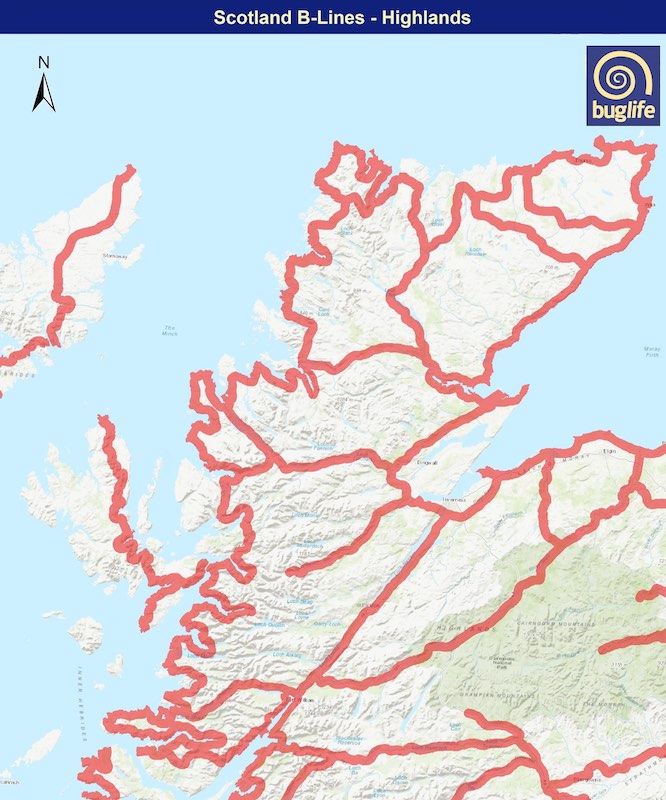This week, conservation charity Buglife are launching a B-Lines map for the Highlands as part of a complete network for Scotland.
B-Lines is the charities response to the decline of bees and other pollinating insects, a plan for how to reconnect our wild places by creating a network of wildflowers across our landscapes.
Our precious pollinators are disappearing from large parts of the countryside – there are fewer bees, hoverflies, butterflies and moths – and as well as the loss of abundance, some species are at risk of extinction in Scotland.
But we can change this, by working together to restore wildflower areas in our countryside and urban areas we can aid nature’s recovery.
B-Lines provide an opportunity to create a network of wildflower-rich areas across Scotland providing essential routes for pollinators to use.
The B-Lines network in Scotland includes the best habitats and identifies key areas to restore and create new wildflower-rich meadows, important grassland verges and pollinator friendly gardens.
B-Lines can be adopted by farmers and landowners, local authorities and the general public across all of Scotland.
Buglife Scotland Manager, Natalie Stevenson, said:
“Launching B-lines across Scotland will help us forge strong regional partnerships so together we can improve habitats and ensure that the important ecological services provided by pollinators can be sustained.
“People across Scotland are realising how critical invertebrates are for a nature-rich future and are beginning to change the way they manage our grasslands, but there is so much more we can do.
“Let us have those critical conversations now and lead the change for our future.”
Many B-Lines naturally align along the coast and key transport corridors such as the internationally recognised NC500.
There are many opportunities to create new linear wildflower-rich verges that will bring benefits to nature and people.
Buglife are excited to work together to ensure both people and invertebrates can move freely across the landscape.
Caroline Vawdrey from the Highlands Environment Forum, said:
“Caring for nature and partnership working are the foundation stones of the Highland Environment Forum work, and B-lines fits that approach perfectly.
“It’s an ambitious project that could make a huge difference to insect’s survival in many parts of the Highlands.
“Some of our member organisations have already been active in creating the B-line maps with the Bumblebee Conservation Trust, Butterfly Conservation and RSPB all sharing their expertise to make sure that the B-lines are the best.
“The Forum is working with partners to create the next Highland Biodiversity Action Plan, and this is just the sort of project that excites us – it’s ambitious, works at a huge landscape level, and there’s so many ways that people can get involved, from creating suitable habitat to recording their favourite bugs and bumbles.”
Everyone who manages land across the Highlands can help to restore our pollinator populations.
Take a look at the B-Lines map and see if your farm, garden, local park or other land you manage is on a B-Line.
If you would like to get involved, please contact Buglife Scotland.
Buglife would like to thank the Esmée Fairbairn Foundation for supporting this project, and the help of all the local and national partners who have helped to map the B-Lines network for Scotland.



